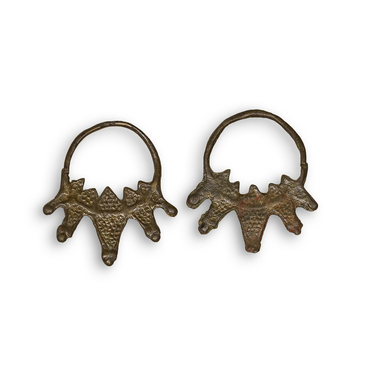The displayed vessel is attributed to the Middle Don Catacomb culture. It was discovered on the territory of the Voronezh region. Scientists have dated it to the second half of the 3rd millennium BCE.
The Catacomb culture was an ethno-cultural group from the Bronze Age that was widespread in the steppes and forest-steppes from the Urals and North Caucasus to the lower Danube region. It was first identified as an archaeological culture between 1901 and 1903 by the Russian archaeologist Vasily Alekseyevich Gorodtsov.
The people of the Middle Don Catacomb Culture were the only representatives of the Catacomb Culture that moved far north into the forest-steppe region. They consisted of two local groups: right-bank forest-steppe and steppe communities. In addition, some monuments of this culture have also been found in the Khopyor Basin, the largest left tributary of the Don River.
The ceramics of the Middle Don Catacomb Culture were influenced by various cultures, including the Corded Ware cultures, the Donetsk Catacomb, and possibly the Middle Bronze Age Culture of the Central Caucasus. Over time, the style of the pottery was simplified. In terms of the funerary rite, archaeologists note foreign cultural elements, borrowed, for instance, from the Rostov-Luhansk and Balanovskaya cultures.
The most characteristic type of the ceramics associated with the Middle Don Catacomb culture is a pot with a flat base, convex sides, and a tall, bell-shaped neck, which is very rarely found in other Catacomb cultures. These vessels could have been used for both cooking and food storage.
Some vessels from the Catacomb culture also contained animal bones, which may have been added after broth was cooked in them. The presence of protozoan parasite remains, such as Echinococcus, indicates that the inhabitants of the steppes consumed the liver and intestines of animals.
Pollen and phytoliths, which are fossilized plant cell fragments, have been found preserved in the soil samples from the pots. Many of these have been identified. It appears that wormwood, cattail, and saltbushes were used as seasonings for porridges. These were prepared from unprocessed grains of wild barley and oats, whose microtubule were found within the vessels. The presence of pollen from various plants suggests that some of the pots once stored a decoction of herbs (such as sage and mint) or honey.




